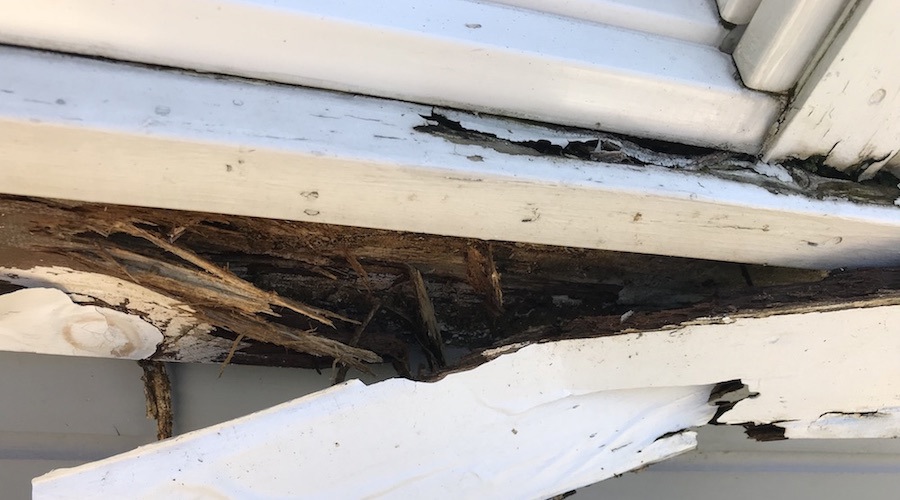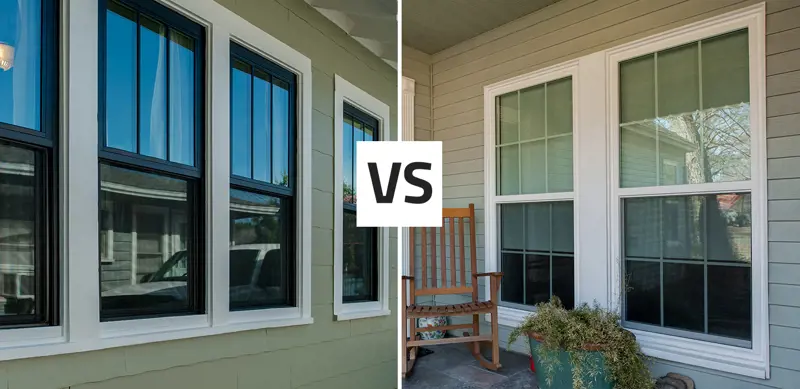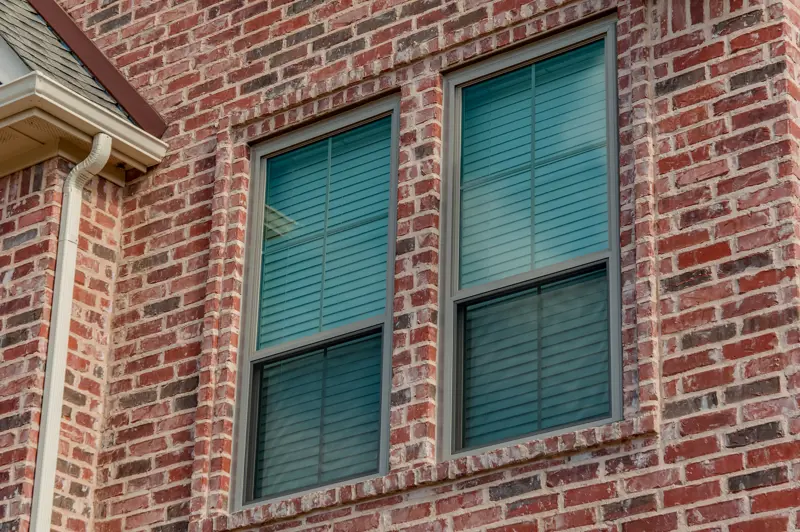
Can Window Rot Cause Other Problems?
Wood rot is a natural part of the world around us. Unfortunately, it can also cause major structural issues in homes made from lumber, in the U.S. that's basically all of our homes. Any part of your house made from wood or wooden pieces can be struck with wood rot. What happens when the frames around your windows start to rot? Can it spread? Does it need to be fixed immediately, or will it take a while to develop? Continue reading for all these answers and more.
Use the links below to skip ahead in this post:
What is Wood Rot?

Wood rot is a type of decay brought on by moisture getting into the wood. Wood-decay fungus happily grow in consistently damp areas and consume moist wood. There is no one way to avoid the fungi with more than 5 million types of it. The best way to avoid wood rot is to ensure that the wood is sealed and inaccessible to moisture. If it only gets damp once in a while, fungi won't live long enough to do major damage. Consistent wetness is enough to cause all kinds of rot. In homes, the three primary types of rot include:
- Brown or "dry" rot
- Soft rot
- White rot
Each of these grows at different paces and in slightly different ways. All of them are unsightly and feature common players such as mold and mildew.
Problems Caused by Wood Rot in Windows

Wood rot in windows is most common on solid wood windows. Wood-clad windows, wood windows with a protective exterior, can also be susceptible to wood rot. If you have metal, vinyl, or composite windows it's unlikely that your window frame will experience wood rot but the wood framing where the window sits or any wood trim around your windows can experience wood rot.
How does wood rot happen?
Wood needs to be sealed with stain or paint to create a layer of protection against moisture and other outside elements. Moisture and critters take unsealed wood as an invitation to invade and eat at the wood. Gaps in window caulking can also allow water to leak into the window unit where it can reach wood and create problems from the inside out.
Wood Rot Problems
- Unsightly appearance
- Mold & Mildew allergies
- Structural instability
The shallowest problem with the least repercussions that wood rot causes are the unsightly appearance your windows take on as the rot problem develops. As fungal spores of mold and mildew develop, dark black, brown, and green spots begin to grow outward from the window frame. This is not only unsightly, but it is also a sign that your window rot has progressed way too far.
Wood rot will rarely only affect a single side of your home. Most moisture problems start from the exterior but it can work its way to the interior and spread to the sides. Many people are allergic to mildew, but even more have mold allergies. Even if you aren't allergic, mold can cause significant damage to your health if allowed to spread into the walls of the home.
Finally, there is the structural instability that a progressive wood rot problem can cause. Wood rot is decay that eats away at the boards in and around the initial area initially infected. As it spreads, those first boards will fall to pieces, and new boards will begin to decay until the process has been stopped.
Signs Your Window Has Wood Rot

You have likely seen evidence in your home of areas that need maintenance attention. If you want to check around your windows for evidence of wood rot, there are ways you can tell before the problem progresses too far.
Visible Signs of Rotting
- Black, dark blue, green, white spots on the surface usually around the edges
Start by taking a walk in your home and around the outside of it. Keep an eye out for black, dark blue, or green spots since these are often the colors mold and mildew take on. It can sometimes grow in white patches as well if you get a case of white rot. If you see evidence of rotting happening, you should act on it immediately. It is not a good sign that it has progressed through the exterior and perhaps even through the frame or a layer of paint.
Spongy Texture
- Surface is soft to touch
If you don't see any evidence of rot, it doesn't mean that it isn't there. Feel around the edges of your windows. Perhaps you have noticed damp areas in the wood around the window after rains. Touch these to see if they still feel solid or if they have developed a spongy texture. A soft texture means that they have begun to rot inside. The situation needs immediate attention if you can poke through the wood surface.
Windows Don't Function Properly
- Difficult to operate
Windows that don't function properly can signify many problems, but one of them is wood rot especially on older solid wood windows. If you can't figure out why your window isn't working, consider wood rot throwing off the window's positioning or its inner mechanisms.
Catching window rot in its early stages and treating it with due diligence is the best way to prevent it from causing other problems. If you are worried your windows are developing wood rot, talk to an expert to ensure your home's continued maintenance.
News, Product Reviews, and Insights
Oops!
We don't currently serve your area but do want to help you plan your project. Try our Build & Price tool to get an idea of window & door costs within DFW. Your area may be higher or lower but at least you'll have some idea of the price.
Thanks for stopping by.







